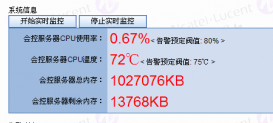InputStreamReader和OutputStreamWriter源码分析
1. InputStreamReader 源码(基于jdk1.7.40)
|
1
2
3
4
5
6
7
8
9
10
11
12
13
14
15
16
17
18
19
20
21
22
23
24
25
26
27
28
29
30
31
32
33
34
35
36
37
38
39
40
41
42
43
44
45
46
47
48
49
50
51
52
53
54
55
56
57
58
59
60
61
|
package java.io; import java.nio.charset.Charset; import java.nio.charset.CharsetDecoder; import sun.nio.cs.StreamDecoder; // 将“字节输入流”转换成“字符输入流” public class InputStreamReader extends Reader { private final StreamDecoder sd; // 根据in创建InputStreamReader,使用默认的编码 public InputStreamReader(InputStream in) { super(in); try { sd = StreamDecoder.forInputStreamReader(in, this, (String)null); // ## check lock object } catch (UnsupportedEncodingException e) { // The default encoding should always be available throw new Error(e); } } // 根据in创建InputStreamReader,使用编码charsetName(编码名) public InputStreamReader(InputStream in, String charsetName) throws UnsupportedEncodingException { super(in); if (charsetName == null) throw new NullPointerException("charsetName"); sd = StreamDecoder.forInputStreamReader(in, this, charsetName); } // 根据in创建InputStreamReader,使用编码cs public InputStreamReader(InputStream in, Charset cs) { super(in); if (cs == null) throw new NullPointerException("charset"); sd = StreamDecoder.forInputStreamReader(in, this, cs); } // 根据in创建InputStreamReader,使用解码器dec public InputStreamReader(InputStream in, CharsetDecoder dec) { super(in); if (dec == null) throw new NullPointerException("charset decoder"); sd = StreamDecoder.forInputStreamReader(in, this, dec); } // 获取解码器 public String getEncoding() { return sd.getEncoding(); } // 读取并返回一个字符 public int read() throws IOException { return sd.read(); } // 将InputStreamReader中的数据写入cbuf中,从cbuf的offset位置开始写入,写入长度是length public int read(char cbuf[], int offset, int length) throws IOException { return sd.read(cbuf, offset, length); } // 能否从InputStreamReader中读取数据 public boolean ready() throws IOException { return sd.ready(); } // 关闭InputStreamReader public void close() throws IOException { sd.close(); } } |
2. OutputStreamWriter 源码(基于jdk1.7.40)
|
1
2
3
4
5
6
7
8
9
10
11
12
13
14
15
16
17
18
19
20
21
22
23
24
25
26
27
28
29
30
31
32
33
34
35
36
37
38
39
40
41
42
43
44
45
46
47
48
49
50
51
52
53
54
55
56
57
58
59
60
61
62
63
64
65
66
67
68
69
|
package java.io; import java.nio.charset.Charset; import java.nio.charset.CharsetEncoder; import sun.nio.cs.StreamEncoder; // 将“字节输出流”转换成“字符输出流” public class OutputStreamWriter extends Writer { private final StreamEncoder se; // 根据out创建OutputStreamWriter,使用编码charsetName(编码名) public OutputStreamWriter(OutputStream out, String charsetName) throws UnsupportedEncodingException { super(out); if (charsetName == null) throw new NullPointerException("charsetName"); se = StreamEncoder.forOutputStreamWriter(out, this, charsetName); } // 根据out创建OutputStreamWriter,使用默认的编码 public OutputStreamWriter(OutputStream out) { super(out); try { se = StreamEncoder.forOutputStreamWriter(out, this, (String)null); } catch (UnsupportedEncodingException e) { throw new Error(e); } } // 根据out创建OutputStreamWriter,使用编码cs public OutputStreamWriter(OutputStream out, Charset cs) { super(out); if (cs == null) throw new NullPointerException("charset"); se = StreamEncoder.forOutputStreamWriter(out, this, cs); } // 根据out创建OutputStreamWriter,使用编码器enc public OutputStreamWriter(OutputStream out, CharsetEncoder enc) { super(out); if (enc == null) throw new NullPointerException("charset encoder"); se = StreamEncoder.forOutputStreamWriter(out, this, enc); }java io系列01之 "目录" // 获取编码器enc public String getEncoding() { return se.getEncoding(); } // 刷新缓冲区 void flushBuffer() throws IOException { se.flushBuffer(); } // 将单个字符写入到OutputStreamWriter中 public void write(int c) throws IOException { se.write(c); } // 将字符数组cbuf从off开始的数据写入到OutputStreamWriter中,写入长度是len public void write(char cbuf[], int off, int len) throws IOException { se.write(cbuf, off, len); } // 将字符串str从off开始的数据写入到OutputStreamWriter中,写入长度是len public void write(String str, int off, int len) throws IOException { se.write(str, off, len); }java io系列01之 "目录" // 刷新“输出流” // 它与flushBuffer()的区别是:flushBuffer()只会刷新缓冲,而flush()是刷新流,flush()包括了flushBuffer。 public void flush() throws IOException { se.flush(); } // 关闭“输出流” public void close() throws IOException { se.close(); } } |
说明:
OutputStreamWriter 作用和原理都比较简单。
作用就是将“字节输出流”转换成“字符输出流”。它的原理是,我们创建“字符输出流”对象时,会指定“字节输出流”以及“字符编码”。
示例程序
InputStreamReader和OutputStreamWriter的使用示例,参考源码(StreamConverter.java):
|
1
2
3
4
5
6
7
8
9
10
11
12
13
14
15
16
17
18
19
20
21
22
23
24
25
26
27
28
29
30
31
32
33
34
35
36
37
38
39
40
41
42
43
44
45
46
47
48
49
50
51
52
53
54
55
56
57
58
59
60
61
62
|
import java.io.File;import java.io.FileInputStream;import java.io.FileOutputStream;import java.io.OutputStreamWriter;;import java.io.InputStreamReader;import java.io.IOException;/*** InputStreamReader 和 OutputStreamWriter 测试程序** */public class StreamConverter { private static final String FileName = "file.txt"; private static final String CharsetName = "utf-8"; //private static final String CharsetName = "gb2312"; public static void main(String[] args) { testWrite(); testRead(); } /** * OutputStreamWriter 演示函数 * */ private static void testWrite() { try { // 创建文件“file.txt”对应File对象 File file = new File(FileName); // 创建FileOutputStream对应OutputStreamWriter:将字节流转换为字符流,即写入out的数据会自动由字节转换为字符。 OutputStreamWriter out1 = new OutputStreamWriter(new FileOutputStream(file), CharsetName); // 写入10个汉字 out.write("字节流转为字符流示例"); // 向“文件中”写入"0123456789"+换行符 out1.write("0123456789\n"); out1.close(); } catch(IOException e) { e.printStackTrace(); } } /** * InputStreamReader 演示程序 */ private static void testRead() { try { // 方法1:新建FileInputStream对象 // 新建文件“file.txt”对应File对象 File file = new File(FileName); InputStreamReader in = new InputStreamReader(new FileInputStream(file), CharsetName); // 测试read(),从中读取一个字符 char c1 = (char)in1.read(); System.out.println("c1="+c1); // 测试skip(long byteCount),跳过4个字符 in1.skip(6); // 测试read(char[] cbuf, int off, int len) char[] buf = new char[10]; in1.read(buf, 0, buf.length); System.out.println("buf="+(new String(buf))); in.close(); } catch(IOException e) { e.printStackTrace(); } }} |
运行结果:
|
1
2
|
c1=字buf=流示例0123456 |
结果说明:
(01) testWrite() 的作用是将“内容写入到输出流”。写入的时候,会将写入的内容转换utf-8编码并写入。
(02) testRead() 的作用是将“内容读取到输入流”。读取的时候,会将内容转换成utf-8的内容转换成字节并读出来。
生成的文件utf-8的file.txt的16进制效果图如下:

将StreamConverter.java中的CharsetName修改为"gb2312"。运行程序,生产的file.txt的16进制效果图如下:

以上所述是小编给大家介绍的Java中的InputStreamReader和OutputStreamWriter源码分析,希望对大家有所帮助,如果大家有任何疑问请给我留言,小编会及时回复大家的。在此也非常感谢大家对服务器之家网站的支持!
















